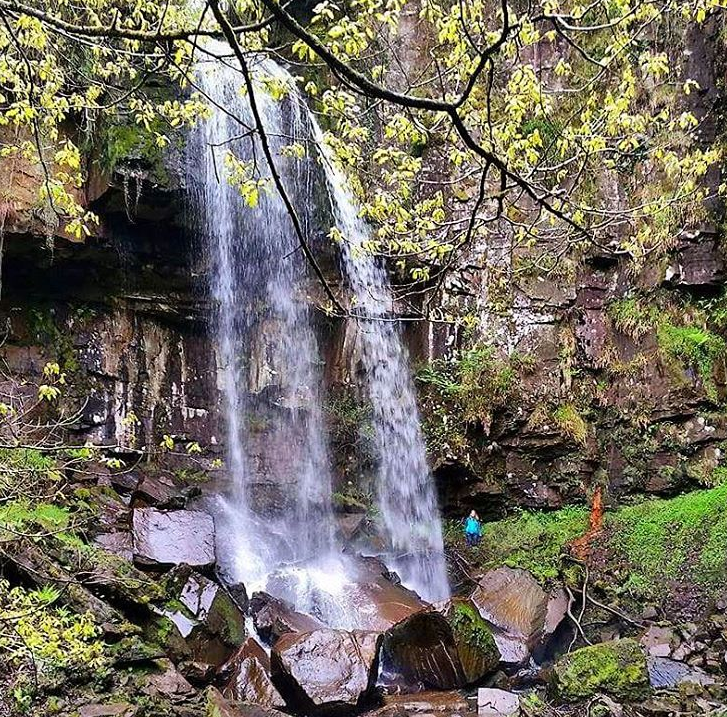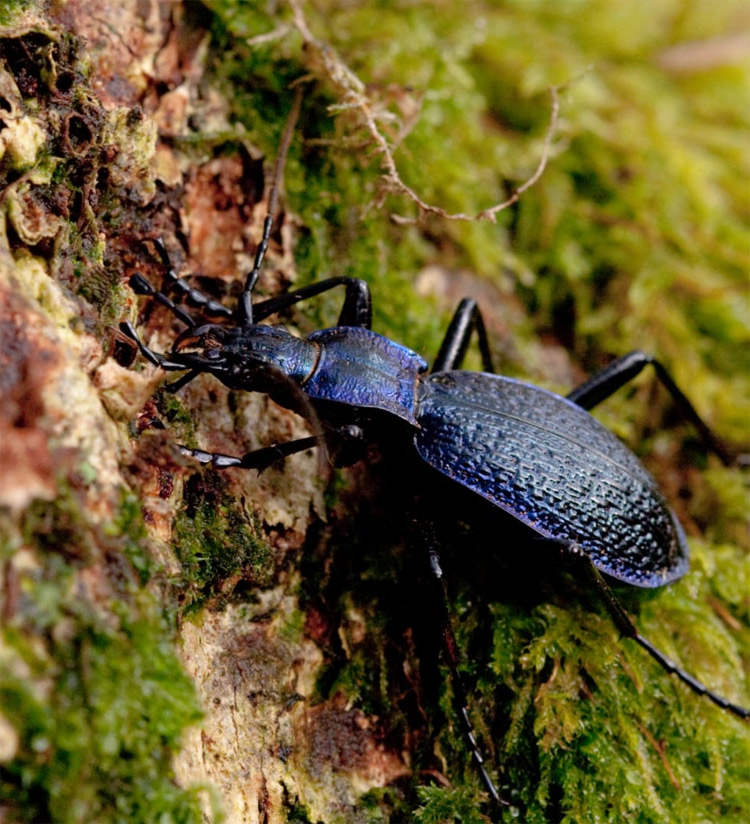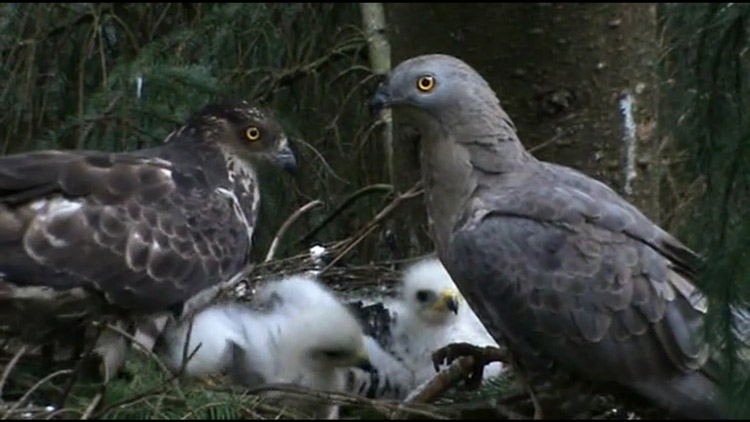Nature in Neath Port Talbot
Neath Port Talbot contains an incredible variety of habitats and wildlife. Some of our habitats are internationally important and the region contains over 21 Sites of Special Scientific Interest (SSSI’s). Here you can find rare species such as Deptford pink, shrill carder bee and fen raft spider. We can boast Wales’ only population of the blue ground beetle, a strong meta-population of marsh fritillary and the county is also one of the most important breeding strongholds for honey buzzard in Wales.

About
Membership of the Neath Port Talbot Local Nature Partnership includes a wide range of organisations and individuals with an interest in local wildlife. It is open to anyone to join and handles the delivery of the Local Nature Plan. We currently have over 60 members. Our primary objective is to further the conservation, awareness and enhancement of nature in Neath Port Talbot
Visit the NPT LNP website to find out more about the LNP and how you can help nature in NPT.

Our Aims
To protect existing habitats, to restore former habitat and create new habitat.
To halt the loss of biodiversity in Neath Port Talbot.
To increase awareness of the importance of our local wildlife.
To educate people about the importance of habitats, to conserve the flora and fauna they support.
To encourage local people to get involved in protecting and enjoying their local biodiversity.
To increase and share the knowledge held about particular species and sites.
To influence activities to be more sensitive to local biodiversity needs.
To advise on appropriate action for conservation in Neath Port Talbot

How are we going to achieve it
Creating partnerships between people that protect and care for nature in NPT.
Gathering information on the conservation of species and habitats in NPT. We will use this to update the Local Nature Recovery Action Plan and to deliver actions identified in the LNRAP.
Supporting the development of projects that are contributing to the aims of the Partnership. Developing new projects to address local priorities.
Providing an advisory function on the subject of the state of nature and nature recovery in NPT. Wherever possible, take an evidence-based approach to help this i.e. through presence on strategic steering groups and advice to community councils etc.
Deliver the Nature Recovery Action Plan to help nature recover in the county.
The Partnership is always working for wildlife in NPT and some examples of work completed or underway include:
NPT Council’s NPT Bee Friendly scheme is increasing the amount of wildflower grassland around the county by changing management on council-managed sites
Afan Environment Volunteers run volunteer work parties to manage meadows in the Afan Valley.
The council manages three country parks, five local nature reserves and many more sites for nature.
Bryncoch Environment Group have been running toad patrols in spring for 15 years, rescuing over 800 toads in 2019.
A large-scale peatland restoration project, Lost Peatlands, is taking place in our uplands.
The Wildlife Trust of South and West Wales manage five nature reserves in the area.
Places to see nature in Neath Port Talbot
There are a wide range of habitats in Neath Port Talbot including such nationally important habitats as rhos pasture, colliery spoil, woodland and peat bogs.
Bryn Tip is one of 5 Local Nature Reserves in the county and is the site of the former Bryn Navigation Colliery. It is now restored to natural habitat and home to many rare and protected species. These include linnets and skylarks, golden-ringed dragonflies, slow worms, common lizards, bee orchids and dark green fritillary butterflies.
The Wildlife Trust of South and West Wales have nature reserves in NPT, including Melincwrt Falls. As well as the spectacular waterfall, you may also spot wood warblers and dippers, as well as a host of ferns.
The reed and sedge beds at Pant y SaisNational Nature Reserve are home to a range of wetland plants, birds and insects. Reed warblers and sedge warblers breed here, along with Cetti’s warbler, grasshopper warbler, reed bunting and water rail. Look out for the big clumps of royal fern – a Pant y Sais speciality. Britain’s largest spider, the fen raft spider, lives on the canal but you are much more likely to spot butterflies and dragonflies during your visit.
Swansea Canal, built in 1796 to transport coal and other
industrial materials, closed to commercial traffic in 1931. The site in Ynysmeudwy is now a Local Nature
Reserve, owned by
Neath Port Talbot Council. Now that the commercial traffic has gone, the canal buzzes with
wildlife, including dippers and otters. Beautiful demoiselle is a very
important species. It likes open spaces on the water. The canal is currently
being managed to encourage this beauty by opening areas up that have become
overgrown.
The Woodland Trust Coed Maesmelin is a ancient woodland haven. Mixed broadleaves and conifers shelter bluebells and herb-rich grassland and provide a home to the only population of the blue ground beetle in Wales.
- Join the LNP!
The NPT Local Nature Partnership run projects and surveys that you can get involved in, so get in touch to find out what is going on in the county. - Volunteer
You can volunteer to help wildlife in NPT, join the LNP to be kept up to date with opportunities. - Record
You can send wildlife sightings to South East Wales Biodiversity Records Centre and NPT Council Countryside and Wildlife Team. - Garden
You can create a haven for wildlife in your own back garden. Take a look at LNP members WTSWW’s My Wild Garden Year for month by month tips on wildlife gardening and the council’s Wildlife Gardening pack.
Highlights
Deptford pink (Dianthus armeria) is a beautiful pink flower which grows in NPT in roadside verges and brownfield. It is rare in Wales and the NPT LNP successfully manage and monitor a site that is a stronghold of Deptford Pink in Neath Port Talbot.
Honey buzzards (Pernis apivorus) are secretive and rare birds of prey in the UK and we are very privileged to see them here in the county from May through to August. Wintering in Africa, honey buzzards are rare breeders in the UK. They are well known for their penchant for eating wasp grubs.
The blue ground beetle (Carabus intricatus) is the largest ground beetle in the UK, and also one of the rarest. In 2012, it was discovered in a log pile in a garage in Skewen. Coed Maesmelin and the surrounding area is the only place in Wales where the blue ground beetle is found. It is a nationally important site and the most northerly population of blue ground beetle in Europe. LNP members Buglife have recently run a project to survey and improve the habitat for this rare beetle.
South Wales is one of the major remaining strongholds of the marsh fritillary (Euphydryas aurinia) butterfly within the UK. There are many areas of suitable habitat and the Dulais Valley is particularly important in the county. LNP members Butterfly Conservation work hard to improve the habitat for the butterfly in the county.
Pant y Sais Fen is habitat for the largest and one of the rarest spiders in Wales, the fen raft spider. They are semi-aquatic, favouring areas along the water’s edge with stiff emergent plants that they use to spin nursery webs that hold the young. They are so big that they can catch and eat stickleback fish.
The coal spoil heaps of NPT are important areas for invertebrate, fungi and lichen conservation in Wales. They contain a wide variety of habitats including heathland, flower-rich grassland, woodland and wetlands.
Key contact
Rose Revera
Ecologist
Neath Port Talbot CBC
Civic Centre,
Port Talbot
SA13 1PJ
Phone: 01639 686838
Email: biodiversity@npt.gov.uk
Website: npt.gov.uk and NPT LNP















